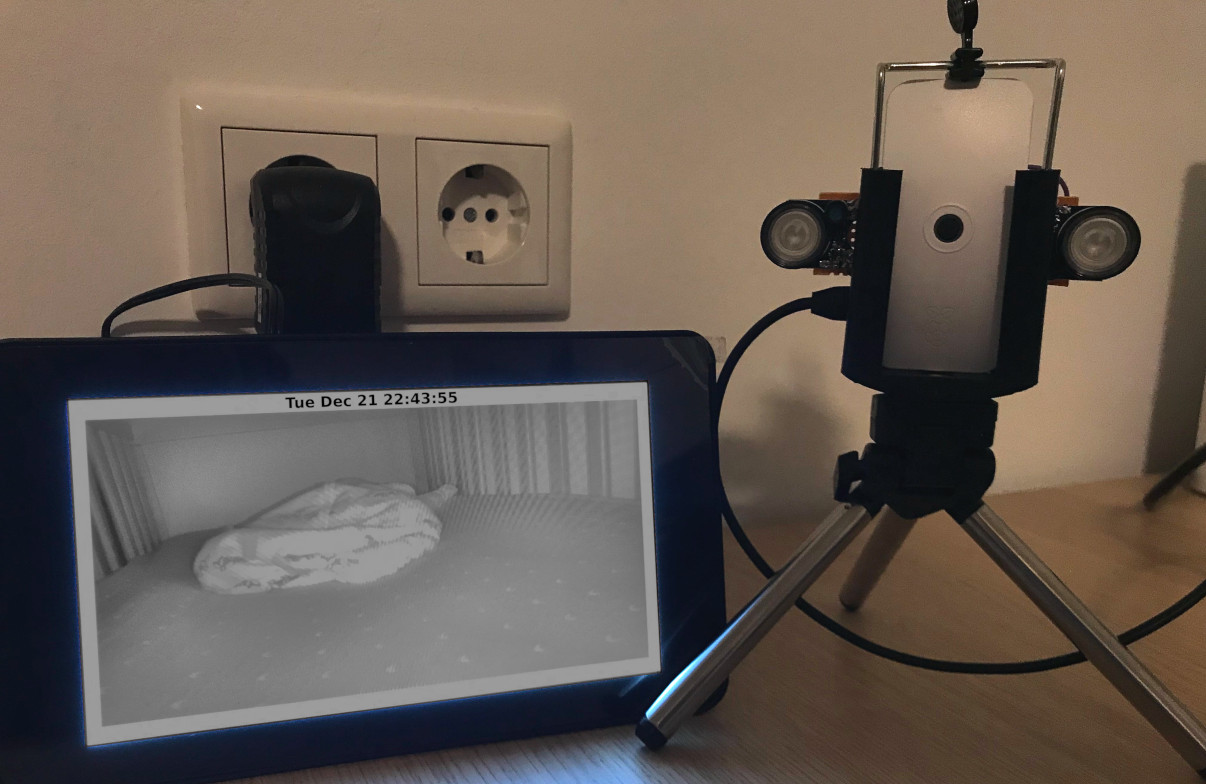There are a lot of baby monitors out there on the market. But none of the ones with video really seemed like a good fit for us. Most either work over wifi, in which case who knows where else that video is going, or talk directly to a monitoring device, which then means keeping track of and charging another thing. I thought I could do a little better.
The task seemed straightforward enough: somehow get pictures from a camera pointed at the baby, onto my local Raspberry Pi server, where they could then be viewed by anybody with a web browser on the LAN. This way, everything stays local to our home network and we could use our smartphones to check in on the little sleeper.
I tackled the receive image and show it on a webpage side of the project first. For this I used the Wt C++ toolkit. Wt is kind of like Qt but for the web. It makes designing layouts and interfaces like building any other GUI app. It's also possible to create REST endpoints using Wt. This meant I was able have the ability to receive an image and have the viewing interface in the same application. This simplified things a lot since all the business logic could be placed in a single executable.
One cool side-effect of working with pictures is that it makes creating timelapses, like the one below, extremely easy. Watching a full night timelapse can then be pretty entertaining to see exactly how the little one ends up in such weird positions. Sometimes, the baby is most definitely not how you left it.
Timelapse shot using a few frames.
The second piece, the camera, is built from a Raspberry Pi Zero W with an infrared camera and a couple of IR LEDs, all mounted to a mini-tripod. All the camera does is take pictures every few seconds and send them to the local server, running the Wt application, via an HTTP POST request. Because all the important logic is in the Wt application, the camera unit itself remains relatively dumb. This is important so that the camera can be unplugged or moved without affecting the viewer application. No need to worry about pulling the power cord whenever.
Any web browser on the local network can access the viewing page. In practice this usually means a smartphone, but also sometimes another browser window set to 'always on top' when on a PC. The viewer shows the most recent picture it received and the timestamp that it was taken. The timestamp is important so it is easy to tell if something has stopped working. The viewer will also push the newest image over websockets to the browser and update itself without having to do any page reloads.
Overall, this turned out to be one of my more useful household projects. Both my wife and I have been using it to keep an eye on the little one while napping or in the evenings during bedtime.
Check out the full code on GitHub if you're interesting in the specifics.
I should also note, that this isn't - and shouldn't be - used as the main source of monitoring a child or baby. Our apartment is rather small so we are always in earshot. This is not a safety device! It's simply to check in on how the little one is sleeping.
